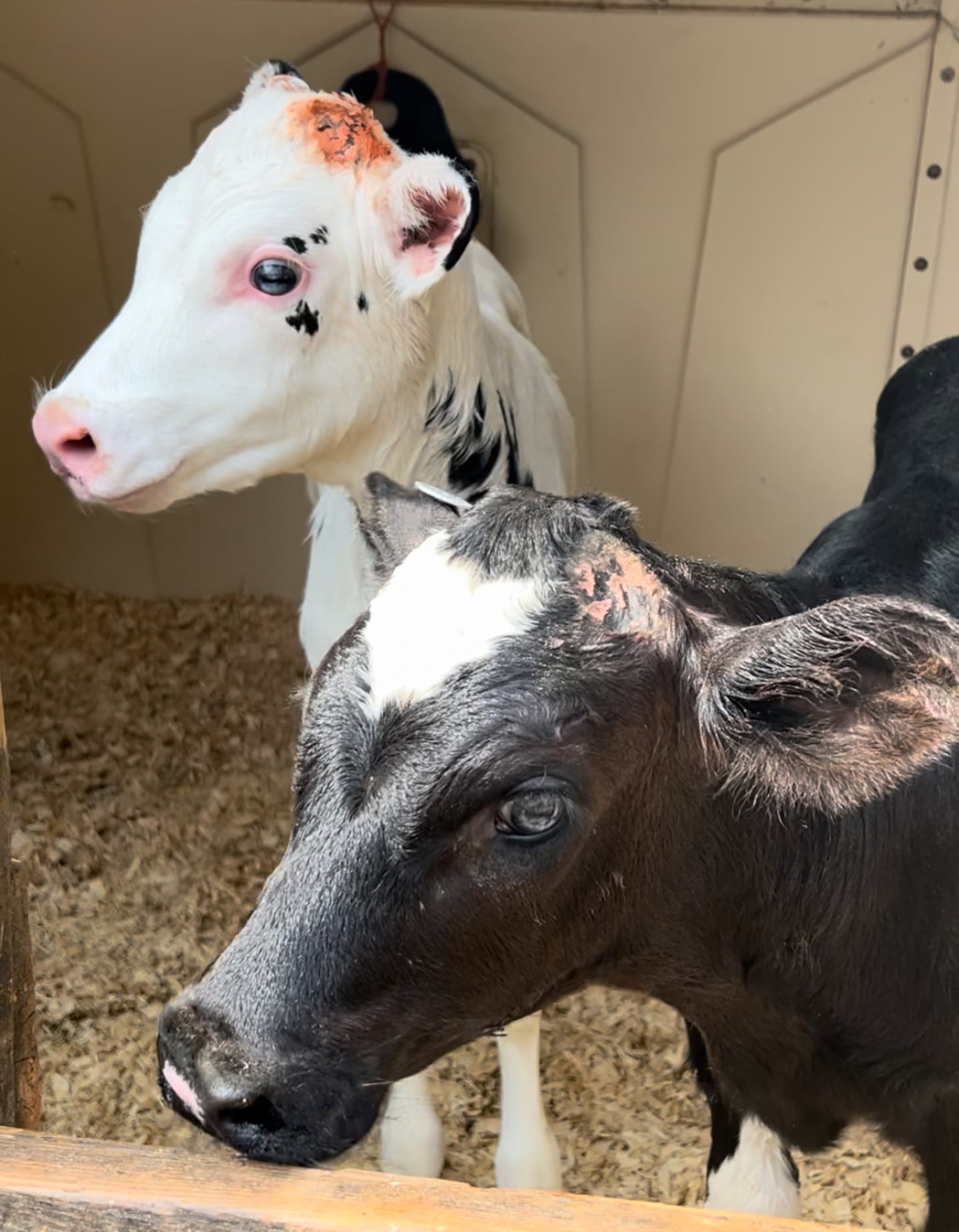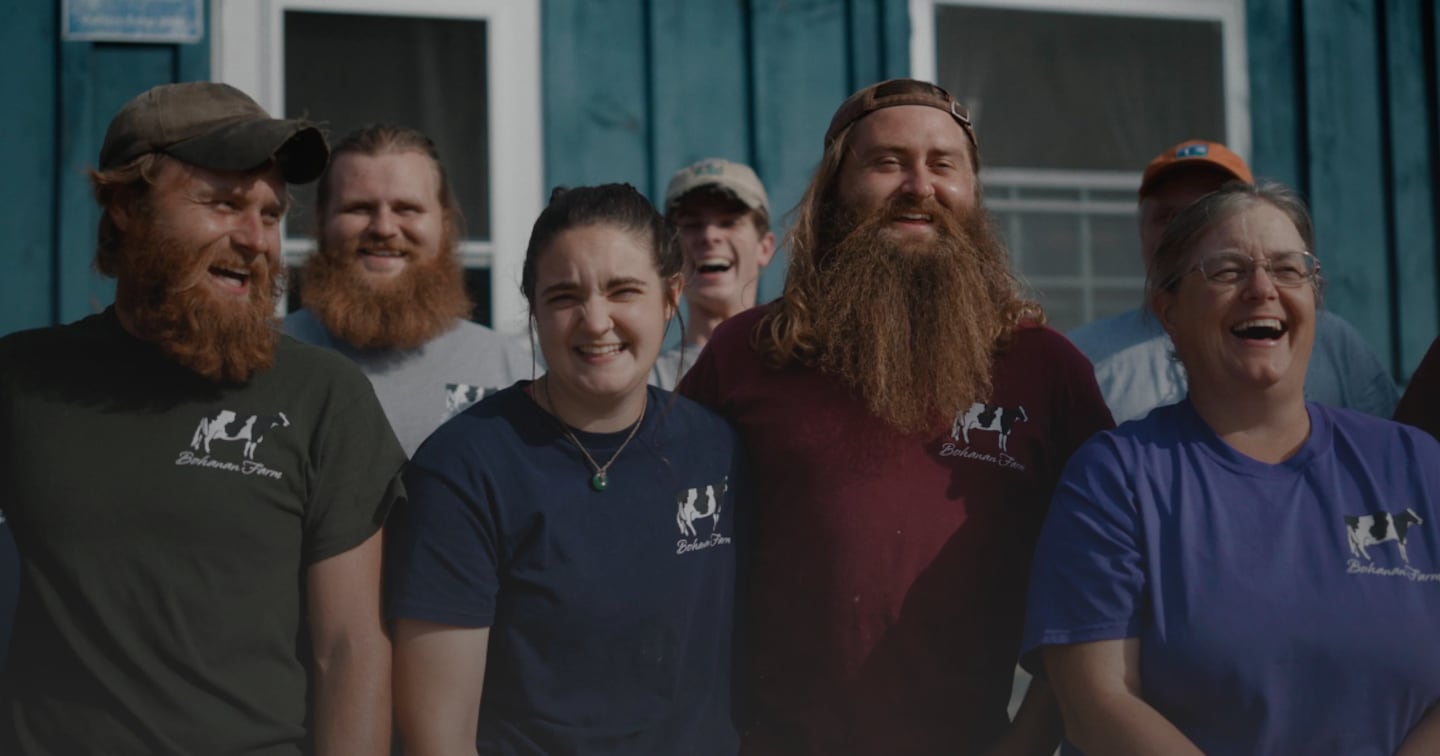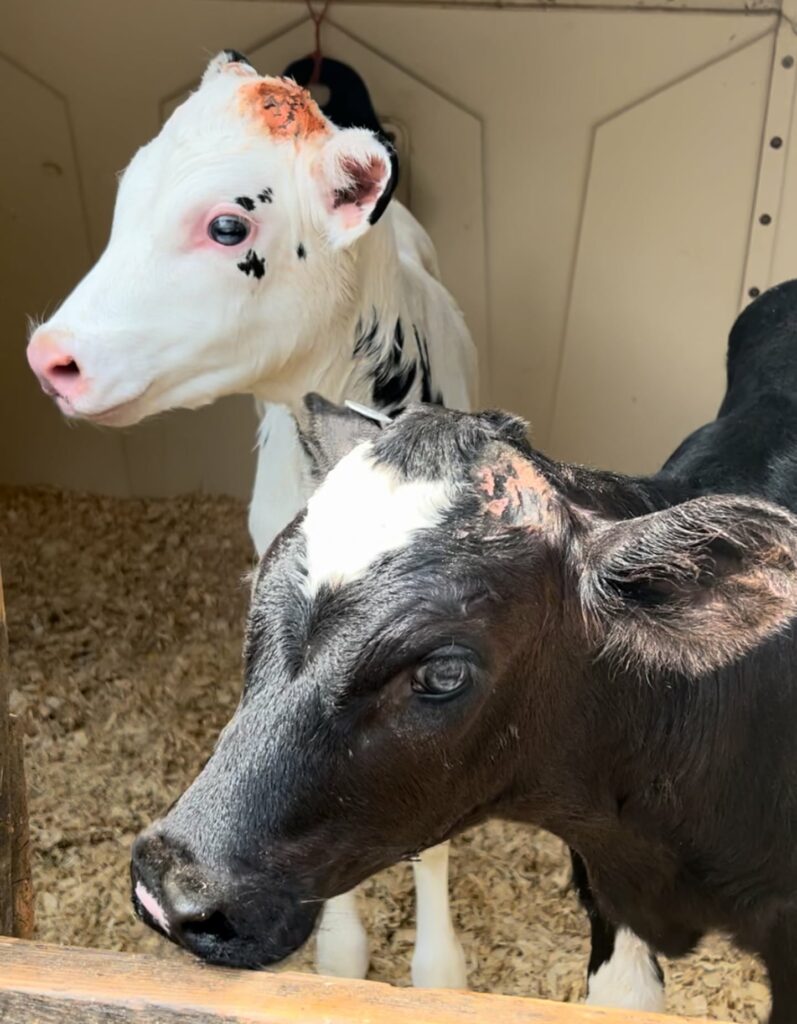Get N.H. Morning Report
A weekday newsletter delivering the N.H. news you need to know right to your inbox.
The Bohanan Farm has evolved to stay in business — launching its own brand, Contoocook Creamery in 2011, so they could process their own milk and sell it directly to grocery stores around New Hampshire and some of northern Massachusetts, earning more than they previously could by selling to a milk cooperative.
Now the brothers are preparing for a future that is expected to keep bringing record-shattering heat. There are a host of challenges to running a dairy farm, and for the latest generation of farmers, adapting to climate change is among them.
“Cows are designed for cold weather really well, and they struggle in the heat,” said Si Robertson. Heat stresses the cows out, he said, and “when cows get stressed out, the first thing that happens is their milk production drops.”
While cows contribute to global warming through methane emissions, they’re also the victims of climate change. And as climate change continues producing record heat, farmers like the Robertsons are making changes to help their cows adapt to the hot, new reality.
 These calves at the Bohanan Farm weigh about a hundred pounds and were born just one day before the photo was taken.Amanda Gokee/Globe Staff
These calves at the Bohanan Farm weigh about a hundred pounds and were born just one day before the photo was taken.Amanda Gokee/Globe Staff
The Robertson family, whose fate is tied to the cows’ wellbeing, has already made some changes in the hopes of accomplishing that.
The calves stand in an open-air barn outside. There are no walls, allowing plenty of airflow, and the roof and fabric hanging from the sides provide shade. Even so, some of the cows are showing signs of stress.
They breathe heavily, their flanks rising and falling. Some start panting and breathing through open mouths, trying to cool off like dogs do. And some drool, another sign they’re getting too hot.
Sprinklers and fans are two tools in the farm’s arsenal to lower the temperature. Up to twice a day, they spritz the cows with water to cool them off in a holding area before they enter the milking parlor.
“You can feel the temperature drop and see their breathing rates coming down,” said Nate Robertson.
In the farm’s newest barn, massive overhead fans help circulate the air and keep the cows cool, features they hope to incorporate when they rebuild an older barn.
Supplements are another tool dairy farmers use to help the cows cope. They work with a nutritionist who offers mineral packs designed to help cows keep their electrolytes up and recover from hot spells faster.
“With our production this summer, we’ve seen that that is working for us,” said Si Robertson.
In Claremont, N.H., Julie MacGlaflin, 40, has turned to similar strategies on her 450-cow dairy farm: shade, huge fans, fresh water, a cow nutritionist, and even a cow-pedometer of sorts that measures the bovines’ activity and alerts the farmers about stress from the heat. They can respond with extra vitamins, minerals, and cow electrolytes.
“It has been a brutal summer for all of us, the cows, and all of us on our team,” MacGlaflin said.
Ventilation and sprinklers are proven interventions, according to Alexander N. Hristov, a professor of dairy nutrition at The Pennsylvania State University. He said a high energy density diet fed at night can also help. During heat waves, he said, cows eat less and milk production goes down.
In the United States, agriculture accounts for about 9.4 percent of total greenhouse gas emissions, while transportation is responsible for 28 percent, according to the Environmental Protection Agency. Of the agricultural emissions, half comes from electricity used to farm, and the other half is considered direct emissions. As cows digest, they produce methane, a potent greenhouse gas, that they release by burping. Their manure is another source of methane.
A 2008 assessment commissioned by the dairy industry focused on milk found that US dairy accounts for about 2 percent of total greenhouse gas emissions, and national dairy groups are working to reach a net zero goal by 2050.
 From left, Si Robertson, Bram Robertson, Maggie Regan, Nate Robertson, and Heather Bohanan Robertson.Courtesy of the Bohanan Farm
From left, Si Robertson, Bram Robertson, Maggie Regan, Nate Robertson, and Heather Bohanan Robertson.Courtesy of the Bohanan Farm
In spite of the latest challenges, the Robertson brothers, with their matching beards and burly physiques, are quick to laugh and they make farming look fun, although the hours are grueling.
A typical day starts at 4:30 a.m. for Bram and Si Robertson who are milking by 5 a.m. and a second time at 4 p.m, while Nate Robertson oversees the night shift, checking in on the barn at midnight.
During those long days, the brothers have become familiar with a wide range of cow personalities. There are the bossy cows, the docile ones, the ones that are prized for how much milk they can produce, and the problematic cows.
Princess Merida is a special favorite of Nate’s (a “sweetheart”), while he gives Lopa a wide berth “because she’s just a wingnut.”
They keep track of family lines by naming the daughters with the same first initial as the mother. “I think there’s Kerfuffle, Kerflooey, Kerchoo, Kachow, Kerplunk,” said Nate, rattling off one family group. Then, there were the twins he named Kevin and Katie, “to put some actual sensibility into that family.”
Their own family has grown recently, too: Bram, the youngest son, and his wife had a baby girl in August.
“I hope she has AC,” Nate quipped, about the unwanted discomfort extreme heat adds to pregnancy as he stood in a barn full of cows “on maternity leave,” recuperating after their latest pregnancies. “I can see how the cows feel so miserable.”
Pregnancy, after all, is the center of a dairy operation — milk only happens as a result of it. The cows have to give birth about once a year. Less than that, and they don’t produce enough milk to pay for their feed.
All three brothers grew up on the farm where they now work, a statistics-defying accomplishment they’re proud of.
“That’s pretty impressive to have the full next generation coming back. That isn’t extremely common, especially today,” said Nate. Instead of adding more cows to support additional families, they diversified, growing a beef market and selling vegetables and eggs. Still, the future isn’t certain.
“I’d be really happy to see that continue. I don’t know if we can keep some of our next generation here,” he said.
Amanda Gokee can be reached at amanda.gokee@globe.com. Follow her @amanda_gokee.
Source link : http://www.bing.com/news/apiclick.aspx?ref=FexRss&aid=&tid=66ed55b77d9342f891289985686b707e&url=https%3A%2F%2Fwww.bostonglobe.com%2F2024%2F09%2F20%2Fmetro%2Fclimate-change-cows-dairy-farmers-adaptation%2F&c=10905569602438750888&mkt=en-us
Author :
Publish date : 2024-09-19 23:00:00
Copyright for syndicated content belongs to the linked Source.
